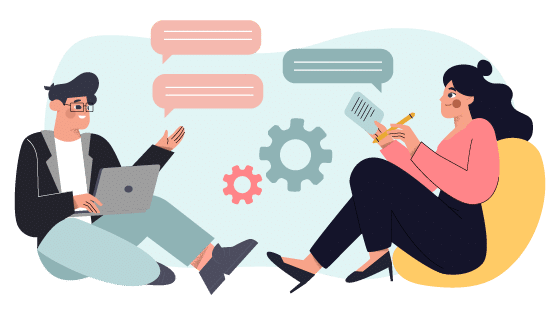Just when you thought you were done with high school, here comes mandatory training for a new skill. And the whirlwind, one-shot training before testing can seem uncannily similar to those nights you spent cramming for your 12th-grade calculus test.
Here’s the thing, though: can you still remember how to find the limit of ‘y’? Probably not. That’s because, while you may have aced your 12th-grade calculus exam, you didn’t do much more than commit a few math rules to your short-term memory. Cramming doesn’t work to transfer your skills from short-term to long-term memory, which is why lengthy one-time training won’t do much to bring about long-term change.
If you want to know more about Microlearning, download our free ebook on it here.
Microlearning may seem better suited to topics users already know well, but instead of seeing microlearning as a “refresher course,” think of it as part of the bigger picture. While cramming everything you can into one-time learning might seem like the most comprehensive way to cover a topic, small, bite-sized pieces are the better way to go. Read on for the ways that microlearning can help you:
Grab and Go eLearning
Just like in a high school setting, not everyone in the corporate classroom is going to be operating on the same level. Trying to fit as much into one training session as you can will leave more advanced students frustrated with the pace or the less advanced struggling to keep up. The beauty of taking a microlearning approach means you’re breaking the material into chunks that can be learned at a pace that makes sense to teach individually. We call it grab and go learning: a way to let learners customize how, where, when, and why they learn.
Microlearning can also be easily layered for a deeper understanding of a topic. Instead of funneling a wealth of information to learners (who might not really be ready for it), you first lay the foundations with digestible bits of information and learners can pick up what they need, layering new information on top of established knowledge.
Not only does this approach respect the individual learner, it actually enhances knowledge transfer. Instead of simply memorizing information on a short-term basis, layering and connecting it to existing knowledge actually helps the brain convert that data to its long-term memory.
Microlearning for Skills
Usually, when microlearning is deployed as a digital learning strategy, it’s done after instructor-led training. Perhaps learners attended a training meeting, for example, and microlearning is used to reinforce new ideas after the session. But for skills-based learning, microlearning works as a precursor to more traditional methods. Learners might be asked to watch a short video before coming to a meeting or take a lesson pre-test to see where they fall on the spectrum of subject mastery. By flipping the blended model, microlearning takes front and center, with the instructor offering reinforcement as needed.
It might not seem like enough, but microlearning can contribute to skills training in a big way. You don’t need to cram all of your information and hope that learners catch on. Instead, offer the building blocks to better learning and your inspired learners will take control of their own learning path and skip the late-night cram sessions.






